Your May Gardening Checklist
By Skip Richter, Contributing Editor
Vegetables and herbs
Most warm-season vegetable crops (including tomatoes, cucumbers, squash and green beans) are reaching their harvest season this month.
The latter three should be picked at peak quality or they will start to decline in quality as they mature past that stage. Tomatoes can be left to ripen on the vine, or if these attractive, red garden ornaments have been discovered by mockingbirds, they can be picked early when first starting to blush and brought in to ripen on the counter indoors. Some birds have a bad habit of vandalizing each tomato with a peck or two, even when the fruits are still green!

Although it is heating up outside, if you’ve been in Texas for even one summer, you know the blazing hot weather is on the way. We have crop options that can take the heat, such as okra, southern peas, sweet potatoes, Malabar greens and amaranth greens. Even eggplant, melons and winter squash do okay in summer heat if given adequate water.
Avoid wetting squash plants frequently with sprinkler irrigation or Choanephora fruit rot can become more of a problem. If fruit rots appear, promptly pick and discard affected fruit to minimize disease spores around the plants.
It is not unusual for the first tomato fruits to get a dark rotten spot on the bloom end of the fruit. This is blossom-end rot and is caused by a lack of calcium in the fruit, most often brought on by wide fluctuations in soil moisture. As a result, container-grown plants and plants in sandy soil are most susceptible, but blossom-end rot can occur even in plants growing in great garden soil. It can affect watermelons as well. So, adjust your irrigation schedule to maintain moderately moist soil conditions.
Fertilize your warm-season crops periodically to maintain good soil fertility and plant vigor. Moderate doses of nitrogen can help accomplish this goal. Sweet corn is an example of a crop that benefits greatly from extra boosts of nitrogen. Peas and beans, on the other hand, need much less, and if overfertilized will produce plant growth at the expense of bean or pod production.
Watch for spider mites, aphids, caterpillars, leaf-feeding beetles and other pests. Early detection and control can prevent significant damage.
That said, a few pests here and there are not necessarily cause for concern. With a few pests, you can help maintain a population of the beneficials that control them.
When mites and aphids become a concern, blasts of water upward from beneath the foliage can help dislodge them and sprays of insecticidal soap and horticultural oil can get them under control. Sprays of Bt applied to the foliage where young caterpillars are feeding are a low toxicity way to shut down an outbreak.
Stink bugs and their cousins, the leaf-footed bug, are significant pests found on our tomatoes, southern peas and many other fruit and vegetable crops.
They are not easily killed by the less toxic sprays, and once they reach the adult stage, they tend to fly around individually, making it more challenging to direct sprays to where they are. So, learn what their eggs and nymphs look like and destroy them at those stages.
Eggs can be simply wiped off of a leaf or petiole and squished! The nymphs are wingless and tend to gather in “herds,” making it simpler to swat them off the plant into a bucket of soapy water placed below them. Such early action can go a long way toward minimizing problems later on.
If you have new seedlings or transplants in the garden, a row cover draped over the plants and secured to the soil all around them can block out many types of pests to allow the plants to get off to a good start. Keep bare soil areas mulched to minimize weed problems. We certainly don’t want to be out in the garden hoeing weeds as the weather heats up, so don’t give them a head start!
Perennials and annuals
Our cool-season flowers have given up their space to the warm-season flowers.
If you have bare space, now is still a good time to fill it with heat-tolerant, warm-season flowers. Some heat tolerant options for color in sunny spots include zinnia, sunflower, cuphea, tithonia, salvia and angelonia. For shady areas, impatiens and wishbone flowers (Torenia) work well.
Start by mixing an inch of compost into the soil at least 4-inches deep. Set out your new transplants and water them in with a dilute fertilizer solution. If you are planting seed, rake away any clods to create a fine-textured soil surface. Plant at the depth indicated on the packet and mist the bed to wet the area well. Covering seeded areas with a spunbond polyester fabric laid over some type of support will promote the slow drying of the soil surface and improve germination success.
After seedlings have three to five leaves, water them with a fertilizer solution. Established flower beds can benefit from a scattering of a complete fertilizer every four to six weeks. After applying the fertilizer, scratch it into the soil surface an inch deep and irrigate the area to begin to release the nutrients.
Wherever the sunlight hits the soil, nature plants a weed! So, keep the soil blanketed with a layer of mulch and save yourself a lot of work later. Weeds compete with plants for water, nutrients and sunlight, so never let them see the light of day!
If any dead foliage from spring bulbs remains in your perennial beds, go ahead and cut it off at the soil surface. Perennials that tend to get leggy will benefit from a light shearing to increase branching and a more compact form.
Salvia greggii and other subshrubs should also be sheared back late this month, followed by fertilizing and watering. Salvia is one of many plants that bloom on new growth terminals, so shearing and fertilizing create more terminals and more vigor for more blooms!
Many of the warm-season pests mentioned in vegetables (above) are also fond of your flowering annuals and perennials. The same control suggestions apply here as well.
Take cuttings from perennials you want to propagate. Dip them in a rooting powder and stick the cuttings in a moist rooting medium, such as a 50:50 mix of peat and perlite. Cover with clear plastic to hold in moisture, and place in bright area but out of direct sunlight.
When planting for summer color, don’t forget to include containers. They are versatile and add interest to areas where planting in the ground isn’t an option. If you have geraniums in containers, move them from full sun into morning sun and afternoon shade, if possible, to keep them happy as the temperatures rise.
Trees, shrubs and vines
When shrub roses finish up the big spring-bloom cycle, cut them back by a quarter and apply a complete fertilizer beneath the branch spread of the bush.
A turf-type product with a 3-1-2 or 4-1-2 ratio of nutrients works well. Rake over the mulch to move the fertilizer granules to the soil surface, then water the area well. This will promote more growth and blooms.
Shrubs that bloom only in the spring (such as spirea, flowering quince, once-blooming roses and many types of azaleas) can be pruned as needed at this time to shape the plants. This allows them plenty of time to regrow and set bloom buds for next spring.
Trees and shrubs love a thick mulch of leaves over their roots and detest competition from grass and weeds. If you stockpiled leaves last winter, use some to top off the mulch now. Grass clippings or spent hay also work well.

If you don’t have these free materials, you can purchase mulch to cover the soil surface. Don’t remove the old mulch but rather add new mulch to the surface, leaving the old mulch to decompose and release nutrients and organic matter to the soil.
Woody ornamentals that were planted last fall, winter or spring are about to enter their first summer season. The combination of a limited root system, hot temperatures and often-sparse rainfall can take its toll on these young plants.
Build up a raised berm of soil about 4 feet or more in diameter to help provide a deep-soaking irrigation. Just fill the berm and the water will soak down into the roots rather than run off the surface. Do this twice a week for the first couple of months after planting and once a week for another couple of months in the summer season. The goal isn’t just to keep them alive but to promote fast early growth.
Fertilize trees and shrubs that are less than five-years old this month with a turf-type product at the rate of one to two cups per inch of trunk diameter for synthetic products, or two to three times that rate for organic products. Water the fertilizer in after application.
Summer watering, periodic fertilizing and elimination of grass and weeds can go a long way toward speeding early growth on woody plants. Remember the goal is to be able to hang a hammock in those trees as soon as possible!
Fruits and nuts
When new blackberry shoots (called primocanes) reach about chest high, snip the tops off to promote side branching. This helps create a more productive patch and one that is easier to maintain and harvest.
Early this month check apple and pear clusters to make sure fruit was adequately thinned. Ideally you should leave one fruit per cluster. Peaches will be ripening this month and next in most of the state, so even though some thinning may still be done, it is getting a little late to achieve much benefit.
Check fruit plants for pests and diseases. Shoots of apple and pear that were killed by fireblight should be pruned out about 6-inches below the infected area.
As an added sanitary measure, dip (or spray) pruners in rubbing alcohol between cuts when removing diseased wood. Check fruit branches for signs of scale infestations. Flag these branches to treat after harvest and again in the dormant season.
Young fruit trees and bushes that have not yet reached production age will benefit from a boost of fertilizer. Follow the rate and application instructions given for ornamental trees (above). Plan on repeating this application again in a couple of months. The goal in the first three or so years is to build as large and well-trained of a tree structure as you can for hanging lots of fruit on in future years!
Mature fruit trees will benefit from one fertilization a year, depending on how much growth they put on in the previous year. Winter pruning is a good time to assess the previous season’s growth to guide spring fertilizing.
Lawns and groundcovers
Warm-season turf species such as St. Augustine, zoysia and Bermuda are growing rapidly in these warm temperatures, if they have adequate soil moisture.
Mowing regularly is important if you want to develop a dense lawn. While weekly mowing fits our life schedule, if you choose to keep the lawn shorter (and especially with dwarf types of Bermuda grass), more frequent mowing will result in a more attractive lawn. The shorter you keep your lawn, the more often you will need to mow.
Apply 1/2 to 1 inch of water a week to the lawn in sunny areas. This is a good time to have your irrigation system evaluated for efficiency and uniform application. There is a long watering season ahead, so a few repairs now will pay off over time and help ensure your turf looks great all summer long.
Keep the mower blade sharp to make clean cuts on the grass blades. Dull mower blades tear and fray the grass blades, resulting in more brown tips, which in turn create a less green overall appearance.
Return clippings as you mow. Clippings help shade the soil surface, blocking sunlight from weed seeds, and also will decompose quite rapidly in the warm moist environment of the lawn, releasing their nutrients to the soil. Over the course of a mowing season, your lawnmower puts out more nutrients than your fertilizer spreader!
Now that temperatures are consistently above the upper 80s, some post-emergence weed control products can be quite damaging to St. Augustine and should be avoided. Hand pulling and working to build a denser turf over the summer are better strategies at this point.
Timely tips
If you have houseplants that are struggling from a lack of light indoors, gradually move them into shady outdoor locations, where the light levels are much higher than the home, to spend the summer.
This is also a good time to re-pot them if they are getting rootbound in the container. Fertilize your houseplants, whether indoors or outdoors, once a month with a soluble fertilizer solution, or every three months with a slow-release product.
Drip irrigation saves water and reduces foliage wetting, which in turn can help minimize disease problems. This is a great time to either hire someone to put in a drip or microsprinkler system for you, or you can tackle it as a do-it-yourself project after spending some time learning the basics.

If you irrigate by hose and sprinkler, consider purchasing a timer to avoid forgetting that the water is on. A good timer can help you avoid coming out in the morning to find the neighborhood kids playing in the curbside river — a compliment of your all-night irrigation!




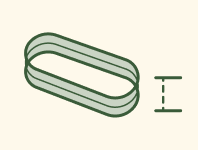
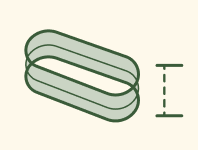
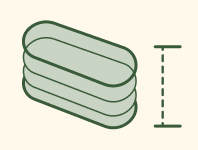
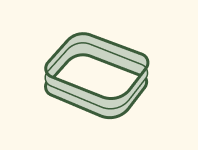
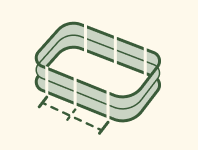
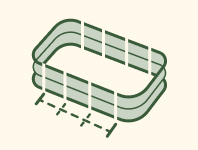
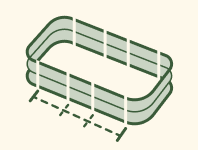
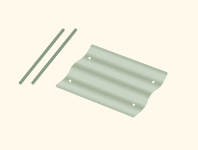




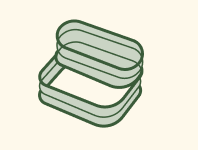
















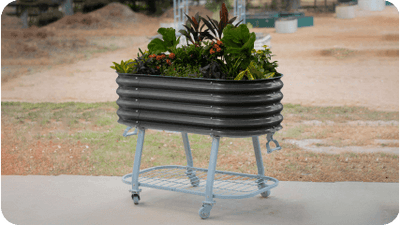









































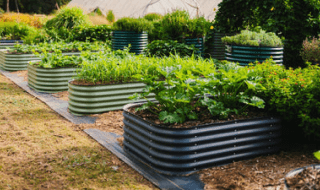
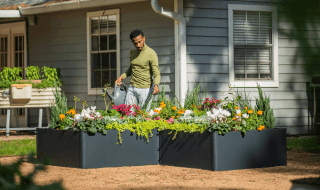
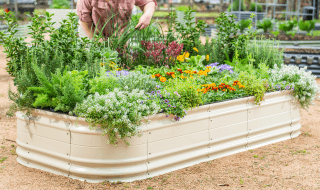
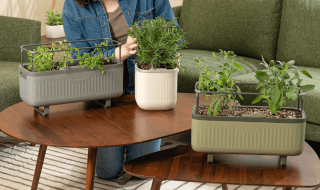
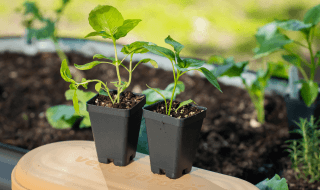
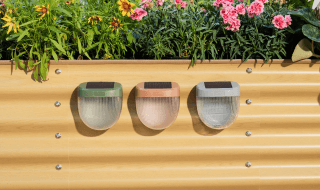
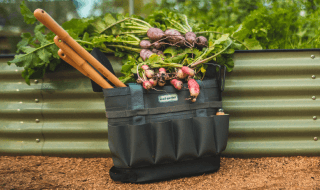
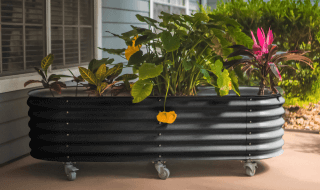







Leave a comment